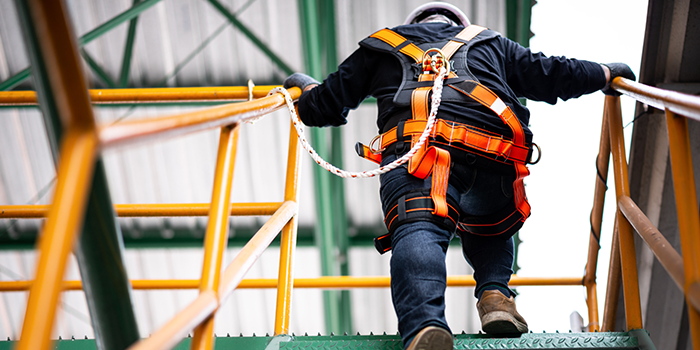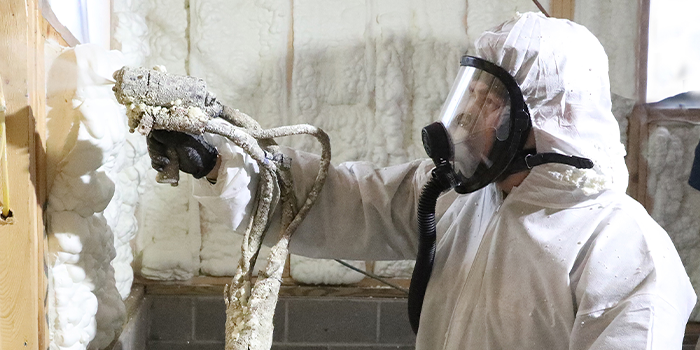In the Heat of the Moment
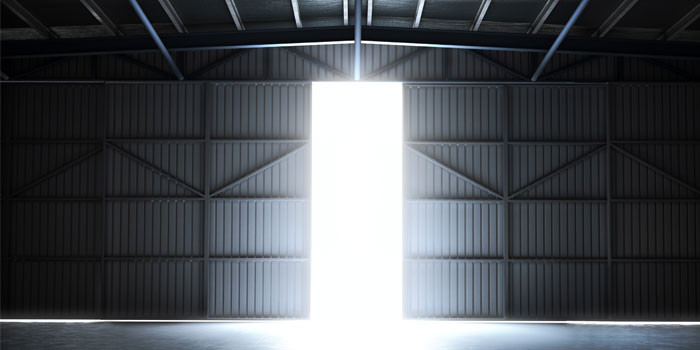

Spray Foam Magazine – Fall Issue 2019 – Emergency situations can happen anytime, anywhere without warning. That is why preparation and attention to detail are imperative. In some cases, following the proper protocols can mean the difference between life or death.
In June 2019, a small aircraft crashed into a Texas airport hangar during takeoff, claiming the lives of everyone on board. Addison Municipal Airport, located approximately 20 miles north of Dallas, Texas, was shut down for approximately 45 minutes after the incident occurred before returning to regular activity.
Spray Foam Magazine spoke with Brad Glazier, Technical Director and Vice President of Testing and Accreditation at International Fireproof Technology Inc. (IFTI), to gather the details of the event.
The plane involved was a Beech BE-300 aircraft, carrying two crew members and eight passengers destined for St. Petersburg, Florida. The accident occurred when the aircraft’s left engine failed, causing the plane to lose altitude and make contact with the roof of a nearby hangar. During the crash, the plane traveled across the inside of the structure and slammed into the side of a wall adjoining a terminal and office building. Fragments of both wings were found on top of the hangar, inside the hangar, and just north of the hangar.
Upon impact, one of the wings was severed off as the aircraft breached the roof and sprayed jet fuel throughout the hangar. The plane continued through the hangar ending on one side of the structure sharing a wall with an occupied terminal building and offices causing three separate fires in different areas of the building. The impact severed the emergency sprinkler standpipe rendering it inoperable, thus leaving the foam and coating as the only defense against the raging flames for those on the ground. Stephen Schult, owner of Advanced Roofing & Insulation based out of Weatherford, Texas, remarked, “Even with all those gallons of gasoline pouring into the hangar, nothing caught fire thanks to the foam and fireproof coating.” Fortunately, that bought the employees precious time to evacuate the premises before anyone else was injured.
Thankfully, no injuries were sustained on the ground due in part to the fact that the fire protection worked as expected. 2.25 inches of Foamsulate 210, an Accella closed-cell spray foam insulation were installed for the original job. Then, over the foam throughout the hangar, 18 mils of IFTI’s DC315 fireproof coating had been applied.
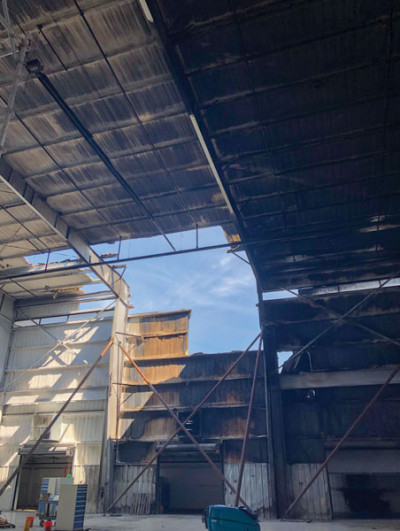
After the impact of the plane crash rendered the emergency sprinkler inoperable, the fire protective coating applied over the foam was the hangar’s only defense against the raging flames.
According to Glazier, “When the coating is exposed to heat, it expands and creates a char barrier over the spray foam. This application was enough to protect the foam from ignition, contain the fire, and prevent any further harm to the individuals on the ground.”
Schult installed the DC315 and Foamsulate 210. The original project consisted of 90,000 feet of inside spraying. The jets inside the hangar had to be moved outside of the structure during the job to avoid overspray. Zoom booms were used to reach the 50 foot ceiling of the building. Workers had to use respirators for the duration of the job and were tied off for safety up in the lifts.
The four-man team for the original project and the follow-up job included: Stephen Schult, Randy Penny, Steve Croft, and Eddie Vanzandt.
According to building code requirements, any occupied area where spray foam is applied must have a fireproof coating installed. This minimizes the risk of damage in the case of incidents and gives occupants the precious time to exit the fire area. The foam and coating assembly contributed greatly to the lack of further injury as well as minimizing the damage to the structure. The insurance company was pleased with the minimal damage caused during the accident.
With the sprinkler system compromised, the fireproof coating was the only protection against the hydrocarbon fuel in the plane. Glazier stated, “Seeing the foam and coating hold up in an extreme situation that you can’t really plan for just proves the effectiveness of the product and justifies the testing that we do.”
Bryan Leatherman, general contractor of Dalton’s Welding Service also based out of Weatherford, Texas, was an integral part of both jobs and was at the airport at the time of the crash. As for the follow-up project, DC315 was used again on the 15,000 feet of the hangar that was damaged by the aircraft. The team had to powerwash and apply smoke and stain blocker to mask the stains and odor of the wreckage. Additional DC315 fireproofing was applied, followed by Sherwin Williams A-100 paint over the spray foam throughout the entire building.
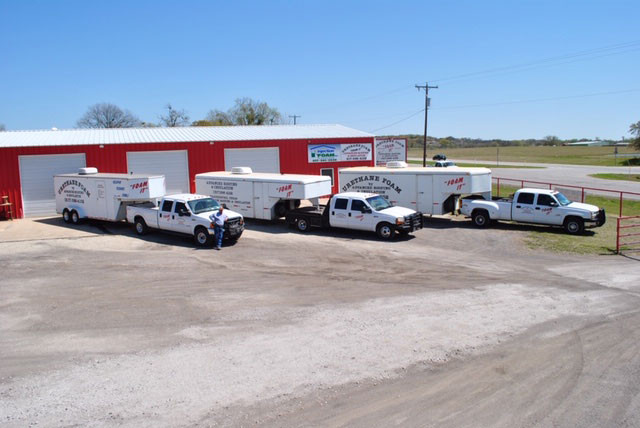
Advanced Roofing & Insulation based out of Weatherford, Texas
This incident is a prime example of the effectiveness of proper application and following code regulations. Thanks to worthwhile products and diligent workers, damage was minimized, and lives were saved. Our hearts go out to the victims of the crash and their loved ones.
Disqus website name not provided.




